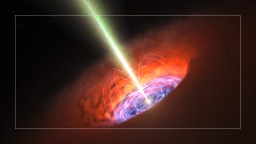What is the essence of being alive? This is the question that geneticist and cell biologist Paul Nurse dissects in his book What Is Life? At the core of life is the cell — an entity that can grow, divide, and reproduce.
Using yeast as a model organism, Nurse discovered a similarity in cell reproduction mechanisms between yeast and humans, hinting at a shared ancestral origin for all life. This commonality extends to genes, the units of inheritance, first recognized in pea plants by Gregor Mendel. Charles Darwin’s theory of evolution by natural selection proposes that life adapts and evolves, favoring traits — and the genes that encode them — that are advantageous for survival.
The essence of life, therefore, is a complex orchestration of chemistry and information management that allows organisms to adapt and persist through inheritance.
PAUL NURSE: There isn't really a very good definition of life. What is the difference between something that's alive, and something that isn't alive? You might think this is a rather simple question to answer, but in fact, it's not so easy to answer.
Should be said, I'm by no means the first person to have considered this question. And if you look in Wikipedia or in a dictionary, you often get rather complex answers. And I wanted a go answering what I think is one of the key questions in biology. And the way I approached it was by exploring five of the great ideas of biology.
My name is Paul Nurse. I'm a geneticist and cell biologist, and I've just written a book- it's my first book, and it's called, "What Is Life?"
The cell is really critical for the way I think about life because it's the simplest entity that expresses characteristics of life. It can grow, it can divide, it can reproduce. And really, all living things- myself, a plant, an insect- is either a single cell or made up of groups of cells acting together.
Most people are not excited by yeast. I have to say, I am excited by yeast. They just think, "Well, it's good for making beer and wine and bread maybe," but actually, it's very good as a model for other cells in all sorts of more complicated living things like ourselves.
In my laboratory, we found a human gene that was similar to the yeast gene that controls the reproduction of a cell from one to two. And it was clear that that human gene could completely substitute for the yeast gene, and control the reproduction of a yeast cell just as well as it could control the reproduction of a human cell.
If the same process was controlling the reproduction of a yeast cell as controls the reproduction of a human cell, then this means this was extremely ancient because yeast and human beings diverged back in the depths of time, deep time, somewhere between 1,000 million years ago, and 1,500 million years ago. This meant that every other living thing that we could see- every plant, every animal, and every fungus- was controlled by the same mechanism.
A monk called Gregor Mendel was interested in looking at the genetics of peas- and what he did is he crossed different peas with different characteristics. And he counted the different types of offspring that were produced from these pea plants. And he began to notice there were very clear ratios: famous ratios like three to one, and nine to three, to three to one. And he realized that maybe what was responsible for inheritance could be described as sort of unitary particle which could be passed down from one plant to another. But it was the first evidence that there was something which we now would call a gene.
The idea of evolution by natural selection is, for me, probably the most beautiful idea in biology. Charles Darwin, who went around the world and collected animals and plants and birds, came up with the idea of evolution by natural selection. He speculated that all living things have hereditary material; that if this hereditary material had some differences that resulted in the living thing being different, and if it was advantageous in the environment in which it found itself, then it would eventually take over the whole population. This has been a revolutionary change in our understanding in biology because what it leads to is a better-designed living thing- but without having a designer.
Life is made up of molecules and chemicals. There are many thousands of chemical reactions going on all the time in a little cell. Chemistry is responsible for the growth of the cell, the reproduction of that cell, for its ability to capture energy and use energy. One of the ways in which cells can carry out all of this chemistry is that the cell is made up of lots and lots and lots of little compartments, and it's compartmentation that allows all these different chemistry to occur simultaneously in such a small space. I want to emphasize how fantastic that is. I want you to imagine in a tiny, tiny cell, there's thousands of chemical reactions, all very different going on all the time very, very close to each other.
So life is chemistry, but life is also built on information- because life has to constantly manage information. Let's take what I said about chemistry and all those different compartments: That can only occur if there's an information transmission to keep the whole thing coordinated. Let's say a gene is making a substance, and it wants to keep that substance at a constant level. As that substance increases, it switches off the gene, and when it decreases, it turns the gene on. But you only really understand that when you realize there's information management going on here. The cell is measuring how much stuff it's got, and then using that to determine whether the gene should be switched on or switched off. If we take DNA, we could understand the structure of DNA in terms of how one base is related to another base, but it only makes biological sense when seen to be a digital information storage device. Life is and can only operate through information. It permeates every aspect of how living things work.
Putting all these five ideas together, I think some principles emerge. Living things are bounded physical entities. The bounded entity is the chemical and informational machine. And then critically, that informational chemical machine in a bounded entity has a hereditary system that determines how it works, a system which has variability, and therefore, the whole thing can evolve by natural selection. And that means that the living thing can acquire purpose: Purpose to be better adapted in the life state it finds itself, and so we can evolve living things from one type into another. And for me, that bounds everything together that emphasizes the core principles underlying life.
NARRATOR: Get smarter, faster with videos from the world's biggest thinkers. To learn even more from the world's biggest thinkers, get Big Think+ for your business.






